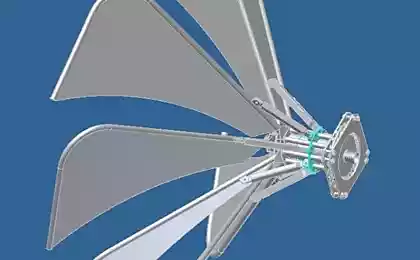481
Assessment of the ability of the roof for mounting solar modules
Evaluation of roof to support solar modules requires an analysis of the condition of the roof, calculating the weight impact of the solar modules and support structures, and also takes into account the potential impact of snow and wind.

Typical solar modules weigh from 9 to 23 kg each and are distributed evenly over the entire area of the roof mounting systems that support them. By dividing the weight of the modules, as a rule, we come to the fact that the total weight of the solar modules and mounting systems that support them is around 13 to 17 kg per square meter of Your ceiling.
Most of the buildings built after 1970 is designed to support loads far greater than this. Our standards, DBN, require prior consultation for the installation of solar panels, but in General, such loads are acceptable.
Housing in our country usually includes a pitched roof, on which solar modules are mounted parallel to its surface. If the roof slope is not too large, the modules can keep the snow and the weight load on the roof can increase dramatically.
This load may be much higher than previously calculated, because snow can weigh much more than modules. In addition, there are circumstances in which the snow load will be greater than what would be calculated from the amount of snow on the ground, including the effects of drift or sliding snow. The actual calculations of weight and related problems, requires analysis of the roof structure and a detailed local climate information.

You also need to pay for the additional wind load caused by the solar panels and mounting system that supports solar modules. In some cases, solar modules can act like a sail, and the wind from under the module can create a very high load lifting.
When sufficient upward force, mounting of solar modules can weaken, and it is also possible that the roof together with the solar station can be significantly deformed.
Therefore, we must also perform the minimum calculation of the lifting force of the wind (Fw is the product of the wind force multiplied by the length of the module, and multiplied by the distance between the rails), similar to the other load calculations.
There are a number of tools to calculate parameters such as the total load on roof, load caused by solar units, uplift from wind and down force from snow. These values differ greatly from place to place and should be considered carefully for a particular customer.
In those places where there may be extreme winds, or where there may be heavy snow, our engineer will design a custom, individual support system and the installation of solar modules.
Since the lifetime of the solar plant reaches up to 25 years, the modules are designed to stay in place for many decades; their correct attachment to the roof is essential for this long term operation. published
Source: svn-energy.com.ua/ru/uslugi/solnechnaya-energetika/otsenka-sposobnosti-kryshi-dlya-montazha-solnechnykh-modulej

Typical solar modules weigh from 9 to 23 kg each and are distributed evenly over the entire area of the roof mounting systems that support them. By dividing the weight of the modules, as a rule, we come to the fact that the total weight of the solar modules and mounting systems that support them is around 13 to 17 kg per square meter of Your ceiling.
Most of the buildings built after 1970 is designed to support loads far greater than this. Our standards, DBN, require prior consultation for the installation of solar panels, but in General, such loads are acceptable.
Housing in our country usually includes a pitched roof, on which solar modules are mounted parallel to its surface. If the roof slope is not too large, the modules can keep the snow and the weight load on the roof can increase dramatically.
This load may be much higher than previously calculated, because snow can weigh much more than modules. In addition, there are circumstances in which the snow load will be greater than what would be calculated from the amount of snow on the ground, including the effects of drift or sliding snow. The actual calculations of weight and related problems, requires analysis of the roof structure and a detailed local climate information.

You also need to pay for the additional wind load caused by the solar panels and mounting system that supports solar modules. In some cases, solar modules can act like a sail, and the wind from under the module can create a very high load lifting.
When sufficient upward force, mounting of solar modules can weaken, and it is also possible that the roof together with the solar station can be significantly deformed.
Therefore, we must also perform the minimum calculation of the lifting force of the wind (Fw is the product of the wind force multiplied by the length of the module, and multiplied by the distance between the rails), similar to the other load calculations.
There are a number of tools to calculate parameters such as the total load on roof, load caused by solar units, uplift from wind and down force from snow. These values differ greatly from place to place and should be considered carefully for a particular customer.
In those places where there may be extreme winds, or where there may be heavy snow, our engineer will design a custom, individual support system and the installation of solar modules.
Since the lifetime of the solar plant reaches up to 25 years, the modules are designed to stay in place for many decades; their correct attachment to the roof is essential for this long term operation. published
Source: svn-energy.com.ua/ru/uslugi/solnechnaya-energetika/otsenka-sposobnosti-kryshi-dlya-montazha-solnechnykh-modulej























